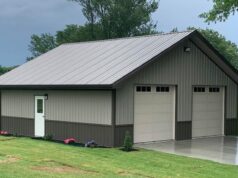
According to a 2016 study done by McKinsey, most construction projects take 20% longer to complete and spend 80% more than their original budget. When a project overshoots its original budget, you risk damaging your construction firm’s reputation. Stalled projects also lower customer satisfaction, reducing your overall rating. In this article, we discuss additional risks that affect the construction industry.
Construction risks affecting the industry
Delays
Construction delays can be caused by several factors, with the most common being poor scheduling. A poor schedule leads to poor productivity, lack of accountability, and workplace stress. In other instances, delays can be caused by environmental factors, such as heavy rains and natural disasters.
Budget conflicts, such as when the cost estimator undervalues a construction project to be more competitive, can also result in delays. Another significant cause: labor shortages, which are very much affecting the construction industry.
The best way to protect your construction business from uncertainties is by using modern technologies like ALICE. This technology is the first construction optioneering platform on the market, created to help contractors reduce the risk of delays.
Pricing and profitability

Another construction risk you need to know about is pricing and profitability. For this reason, contractors should use a pricing strategy to protect them. One such strategy is a cost-plus strategy, in which the project owner will directly incur the cost of materials and labor. As a contractor, you will make your money by adding a markup to the total amount as your profit.
Unclear scope of work
Scope of work is an agreement between a contractor and project owner detailing the roles and responsibilities of each party. The scope includes a glossary, problem statement, project goals, milestones, and project timelines. One of the biggest problems of having an unclear scope is scope creep.
When a project is affected by scope creep, there is a high probability that the project owner will lose money, and customer satisfaction will be reduced. Scope creep arises when the project owner keeps changing or adding new designs to the project.
5 strategies for analyzing construction risk
The best way to avoid risks is to identify and develop mitigation strategies before they stall the entire project. You can accomplish this by identifying strategies for analyzing construction risks. Some of these strategies include the following.
1. Use modern technology to your advantage

The larger a construction project, the more complicated it will be. Therefore, you will need to use modern technology to help you identify and develop mitigation strategies. Modern technologies can be used as a scheduling and planning solution for linear projects, such as road construction.
When you use such technology, it will be able to simulate different options to recover a stalled project and reduce risk. Additionally, architects can use the technology to upload 3D models and leverage BIM technology.
2. Analyze risk categories
One strategy you can use to analyze construction risk is to identify common risk categories that are likely to happen. To explore risk categories, you must first know which stage of construction you are in.
Each risk category has events you and your team will have to identify and develop solutions for. Examples of these risk categories are:
- Project management risks: Examples of risks under this category are lack of management efforts, poor knowledge by stakeholders, and poor project schedules.
- Scope creep risks: This risk can be caused by several factors, the most common being poor planning, unclear requirements by the client, and varying requirements by stakeholders.
- HR management risks: These risks involve the management of the entire workforce. The most common HR risks are poor management conflicts, poor resource scheduling, and lack of team motivation.
- Technical risks: Technical risks include the technical aspects of the construction project, such as having rigid and non-scalable architecture. Rigid architecture makes it difficult for the contractor to make corrections in the event of a design flaw.
3. Perform a requirements review

A requirement review happens when the contractor and project owner reviews all construction documents to identify errors or omissions. If your requirements form is in order, you can rest assured your construction project will be well streamlined. A requirement review can either be formal or informal.
In a formal requirement review, the contractor walks the client through the required documentation, explaining its importance and implications on the project. The requirements are checked based on parameters, such as traceability and verifiability. Contractors must also review the project’s adaptability.
In the construction world, adaptability is the design’s ability to be changed without causing large-scale implications. These implications can be in the form of financial resources or time delays.
4. Peer review the project plan
Peer reviewing is crucial because it can help you identify errors your team could have missed. Peer reviewing involves inviting independent estimators, engineers, and architects to assess your plans and pinpoint any errors. A good example is when an independent estimator realizes that the pricing formula does not factor in externalities such as inflation.
Peer reviewing is also crucial because it enables independent engineers and architects to examine the construction blueprint and advise if the design is realistic or not. Once an error or omission has been identified, your team should discuss the error and develop mitigations for the problem.
5. Have a root cause analysis done

Another strategy for analyzing construction risk is to look at past risks that have affected similar construction projects. Looking at past events will make it easy for you to prepare for risks. For example, if a similar past project was delayed because of scope creep, you should devise strategies to avoid such risks.
When doing a root cause analysis, you need to answer four main questions:
- What happened?
- How did it happen?
- Why did it happen?
- What can be done to avoid the identified risks?
In conclusion, analyzing risk is the only way to ensure that you prepare for unforeseen circumstances. This way, you will always be in control of these risks instead of having the risks control you.












